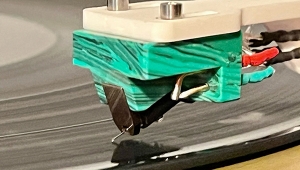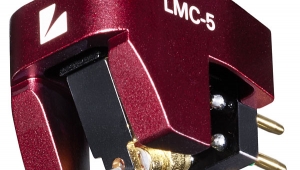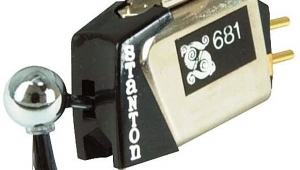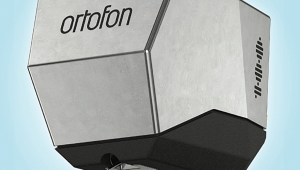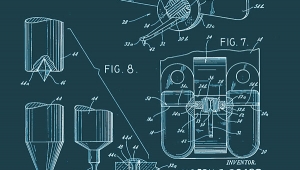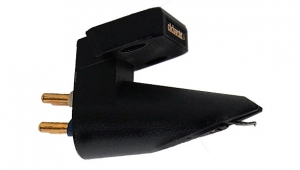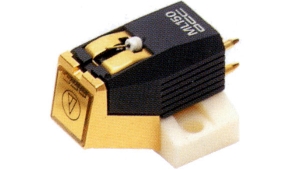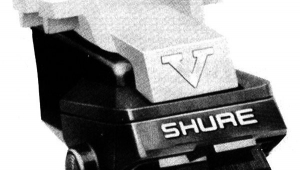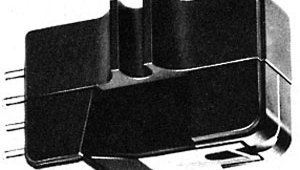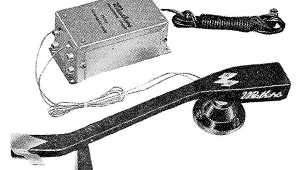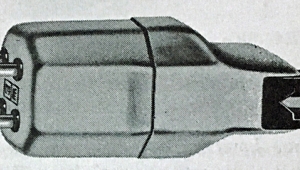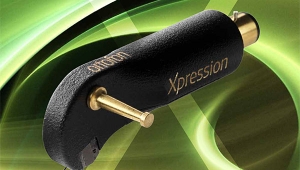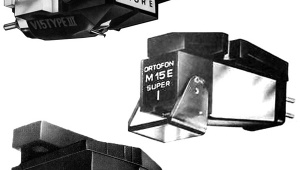| Columns Retired Columns & Blogs |
Ortofon MC-3000 MC phono cartridge Alvin Gold, October 1988
Alvin Gold wrote about the Ortofon MC-3000 in October 1988 (Vol.11 No.10):
Footnote 1: Stereophile's first sample also arrived en deshabille. Ortofon USA tells us that the packaging has been improved to avoid this.—John Atkinson
Audio Technica isn't the only large cartridge maker in the business of showing the audiophile elite how it should be done. Ortofon has done something similar with its MC-3000. This $1000 cartridge, JGH's reference since its introduction last year, comes dangerously close to breaking my own self-imposed rule for this piece—equipment should be relatively affordable. In fact, I'll go further and suggest that Ortofon's costs being what they must be, I think it is pitched over the odds in the UK, though I'll never be able to prove it. However, I take comfort from the thought that the Ortofon easily outperforms some cartridges costing at least twice as much.
I was also gladdened to see that even the big, clever companies like Ortofon have feet of clay. Imagine, if you will, this magnificent $1000 cartridge arriving in a big red and white box, big enough to hold a whole month's production of Koetsus, packing and all. I open this box, and inside there's nothing less than a wooden packing crate and a jimmie, with a clear invitation to use one to do something unspeakable to the other. Once inside, I discover the box is packed with straw. I call in the goat, tethered in the back garden for just such an eventuality, and when he's done we're reduced to a large solid Perspex phallus which splits down the middle to reveal—yes, that's right—a cartridge. The cartridge. Only it's lying loose, having burst free of its moorings, the stylus guard lying in pieces around it. Imagine, if you can, all the hours of work and all the money that has been spent on this packing, all for the sake of massaging the ego of the guy who's already paid his money—then to get it so gloriously, completely wrong that the enormously expensive packing (which lacks the benefit of having been done in good taste) doesn't even do its job.
I'm not the only one this has happened to. I read in another magazine—The Absolute Sound, I think—of another instance exactly like mine (footnote 1). Only that wasn't the end of my particular tale of woe. By some miracle, my cartridge hadn't been damaged. The precious cantilever was intact, the cartridge measured and behaved well. The next stage was to install it and get it running, in some hurry since I had been given only a relatively short time to produce a review, and had been forewarned by the importer to run it in for about 30 hours. Rolls-Royces are delivered to their customers with their engines already run in, but there you go.
I discarded the supplied brass screws and plastic washers (naturally) in favor of my usual stainless-steel socket-headed bolts, checked the tracking force in the instructions, screwed the cartridge to the headshell of my Rega RB300 tonearm and—Snap!
Snap? Unfortunately, that's exactly what happened. I did the cartridge bolts up tight, but not obscenely tight since I don't believe in physical abuse as a method of promoting good adhesion. But it was enough to be too much. I heard a faint click as I tightened the Allen key, and as I loosened the screw with a sinking feeling, I watched as a section of bodywork from around the fixing holes slid gently to freedom. I later discovered a crack running across to the other side of the cartridge body. I must say, Ortofon took it awfully well. Only later did I find out why: It had happened two or three times before. Or five. Maybe more; they weren't talking.
Based on my disastrous hands-on, I have a few brief words of advice. Obviously, the cartridge should be treated as though made of bone china. The screws, nuts, and washers should be Ortofon's own—the bolt and nut have a large surface area and the back of the screw has an unusually flat surface. Now I see why. My other words are directed at Ortofon. Instead of wasting money on the fancy packaging, which detracts rather than adds to the product's credibility, they should have invested in red warning stickers and plastered them all over the packaging, and not just plonk a note in small type on the bottom of page umpteen of the instruction booklet, which is what they did. Someone back at base in Denmark ought to be hauled over the coals for this—by pulling whatever comes most readily to hand.
Once fired up and run in, though, I have to tell you that in my humble opinion—you don't know about my humility? Well, it's not something I like to brag about—the MC-3000 reveals itself as among the elite handful of cartridges at any price.
But I'm skipping things. The design is interesting on a number of counts, and breaks with a number of Ortofon house traditions. For example, although Ortofon has used exotic cantilever materials in the past, this, their most expensive cartridge ever, uses a simple alloy tube. More important, output voltage has finally been boosted to a level directly comparable with the main Japanese competition. The significance of this is partly that compatibility with normal amplifiers is ensured, but there's an extra bonus in that there's no need to use a dedicated transformer, which certainly is necessary with many previous Ortofon MCs, including some of their older, higher-output designs.
The T-3000 transformer
This is just as well. To match the MC-3000, there is a transformer called the T-3000. Immaculately designed, it features twin mono construction, toroidal transformers with mu-metal cores, mu-metal screening, silver wiring throughout—and a totally dedicated design which means that there is no need for impedance or gain or any other kind of switching. It's a purist device that seems to do everything right, and it's expensive—$l800 in the UK. The trouble is that it doesn't quite work. There's a loss of specificity and focus, a degree of smearing, that is not there when the cartridge is amplified in the usual way (footnote 2).
The popular image of the transformer as a passive device which is inherently better than almost any amplified circuit certainly doesn't apply in this case, and thinking back I can't say it's an idea that has been well supported by the practical examples I've come across over the years. I know that preamplifiers are seen as medieval anachronisms in some circles, but in this case it could be that active preamplification is the lesser of two medievals. It occurred to me to wonder, quite hypothetically you understand, whether the large amounts of solid metal and the miles of coiled-up silver weren't causing the very problem that solid-core wiring is designed to tackle, albeit in a slightly different context. Certainly the auditioning results are consistent with the idea. Any thoughts?
Summing Up
Back with the cartridge—about which there are no such doubts, by the way—the body is a sintered aluminum oxide; in other words, a ceramic, ground to an optical standard of flatness. It has clear implications for headshell design, and with structural resonances claimed to lie above the audio frequency band. The armature is carbon fiber "to eliminate eddy currents" (pace T-3000 discussion above), and all wiring is pure silver. All possible means to keep phase integrity good at the HF have been taken, with the result that the cartridge has a claimed –1dB point at 50kHz!
The small sharp pointy bit at the end of the cantilever, a long line-contact design, is known as an Ortofon Replicant 100 (!) and made by Fritz Gyger. Fritz, I understand, is one of the guys who actually makes van den Hul styli for the master. Compliance is very low, damping is good, and compatibility with the better class of hardware usually used with this kind of cartridge (including the magnificent Air Tangent, by the way) is extremely good.
This is truly an excellent cartridge that justifies all the obviously considerable efforts that have been expended on its development. The sound is taut as a drumskin, yet as natural as the daylight. It's all about clarity, cleanliness, transient response, a quick, punchy bass, and the most exquisite, holographic stereo. The usual problem with cartridges that sound like this description is that they're bright and/or edgy. This one's neither. The clarity is inherent, not achieved by tweaking the frequency-response shape.
A few words on the Air Tangent/Ortofon combination. The two have a kind of synergy that is quite special, and well worth putting yourself out to hear. I've only come to really know the Air Tangent in the last few months, and I admit to being surprised at how good it is, especially in the area of stereo imagery, which could also be described as the Ortofon's forte. The combination is so crisp and precise, and, well, holographic, it could be used as a gunsight for the blind.—Alvin Gold
Footnote 1: Stereophile's first sample also arrived en deshabille. Ortofon USA tells us that the packaging has been improved to avoid this.—John Atkinson
Footnote 2: I heard a similar character emerge when comparing the T-3000 with the superb John-Curl–designed Vendetta Research phono preamplifier.—John Atkinson
- Log in or register to post comments
